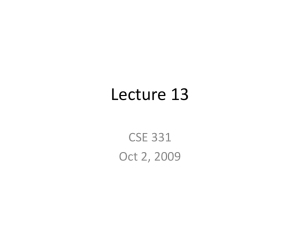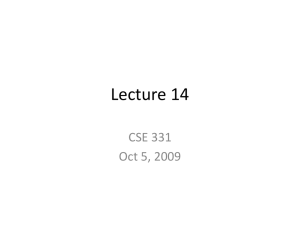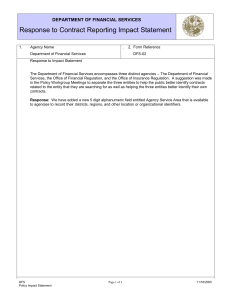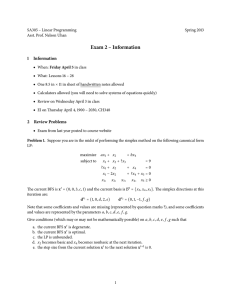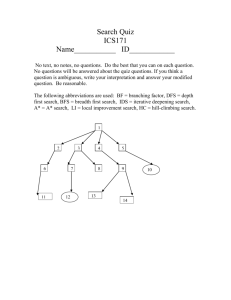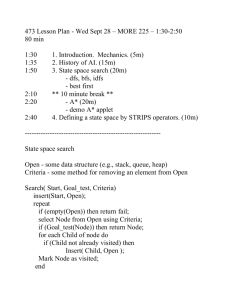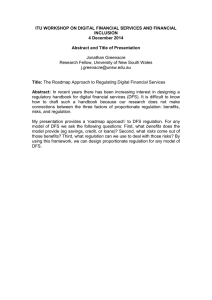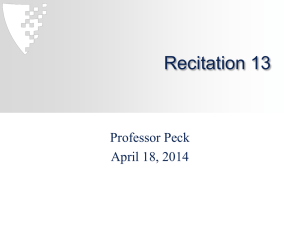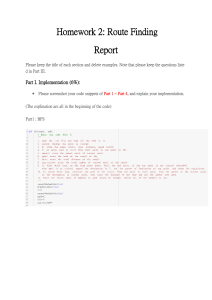Seatwork
advertisement
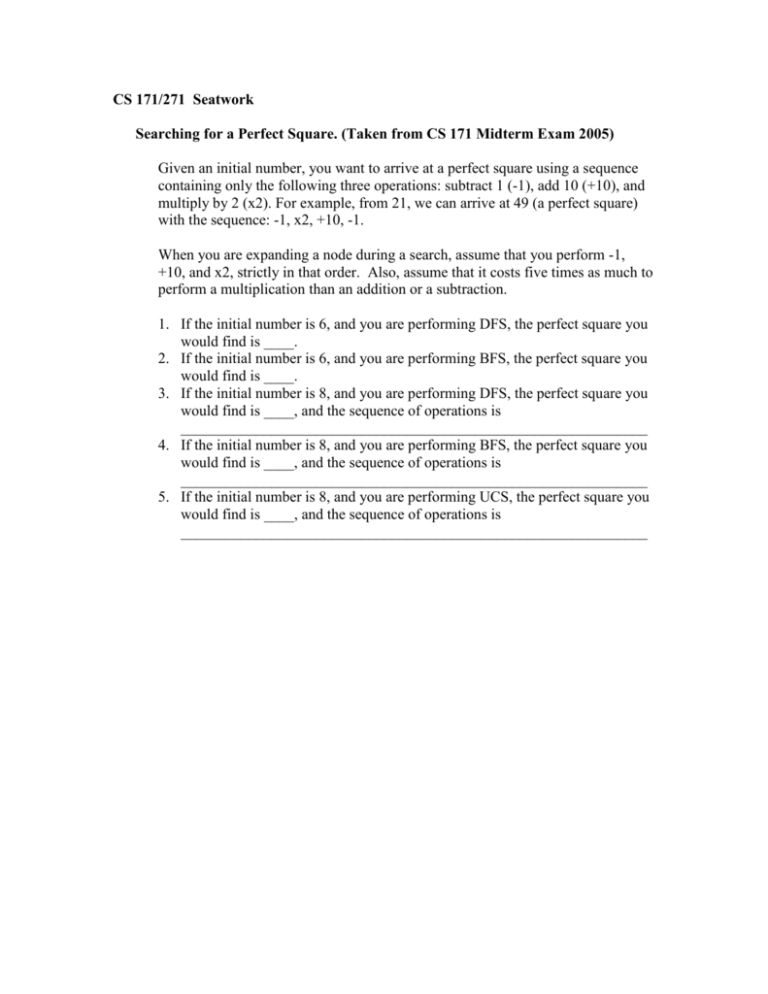
CS 171/271 Seatwork Searching for a Perfect Square. (Taken from CS 171 Midterm Exam 2005) Given an initial number, you want to arrive at a perfect square using a sequence containing only the following three operations: subtract 1 (-1), add 10 (+10), and multiply by 2 (x2). For example, from 21, we can arrive at 49 (a perfect square) with the sequence: -1, x2, +10, -1. When you are expanding a node during a search, assume that you perform -1, +10, and x2, strictly in that order. Also, assume that it costs five times as much to perform a multiplication than an addition or a subtraction. 1. If the initial number is 6, and you are performing DFS, the perfect square you would find is ____. 2. If the initial number is 6, and you are performing BFS, the perfect square you would find is ____. 3. If the initial number is 8, and you are performing DFS, the perfect square you would find is ____, and the sequence of operations is ______________________________________________________________ 4. If the initial number is 8, and you are performing BFS, the perfect square you would find is ____, and the sequence of operations is ______________________________________________________________ 5. If the initial number is 8, and you are performing UCS, the perfect square you would find is ____, and the sequence of operations is ______________________________________________________________
